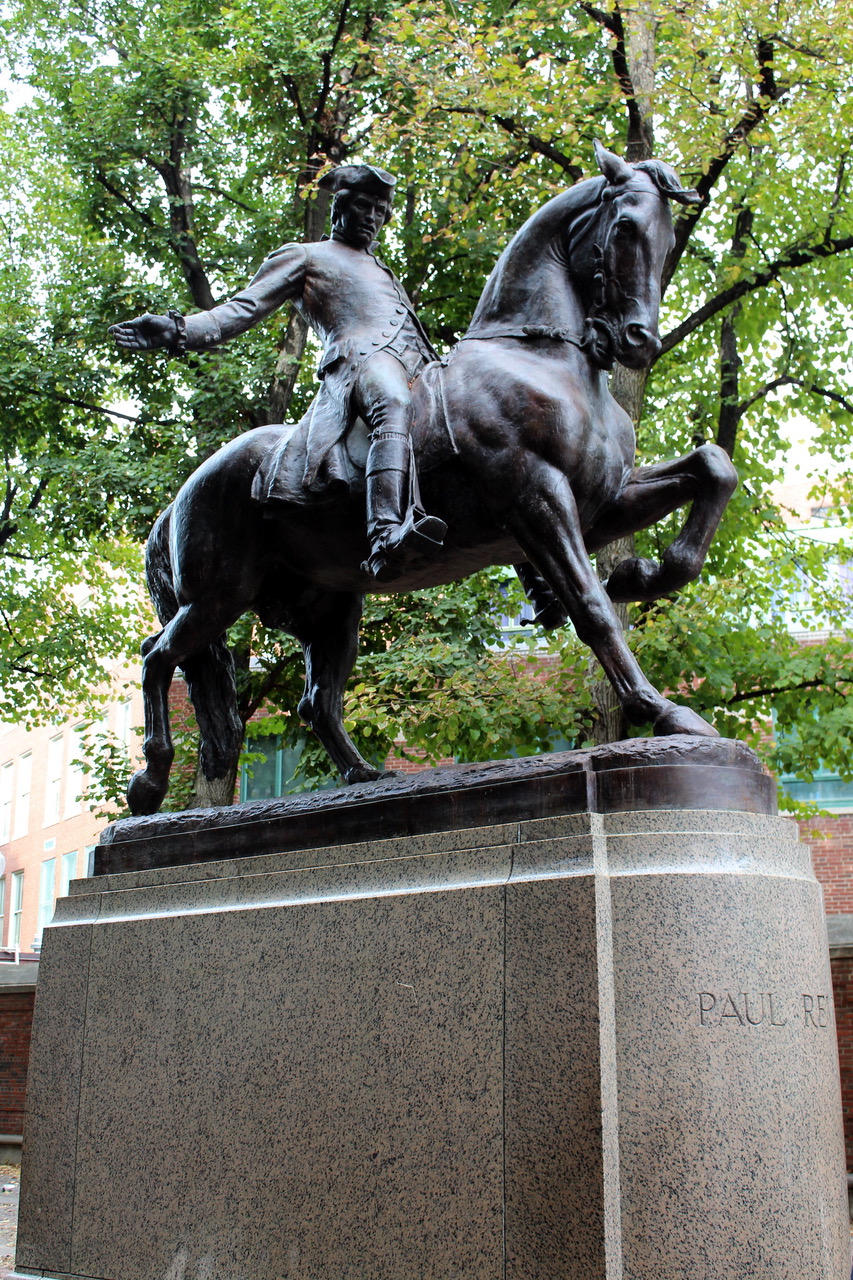Paul Revere’s “Other” Rides
By: Tegan Kehoe
Listen, our readers, and you shall hear
of the lesser-known rides of Paul Revere.
While Revere is famous for his midnight ride on the eve of the Revolutionary War, he actually made a number of rides as a messenger for patriot groups. These trips varied in length and in urgency, and now, they also vary in how much information about them survives in the historical record. Together, they tell a fuller story of the American Revolution. Revere was a small part of a large network of people agitating for change. The political revolution that took place in the lead-up to the Revolutionary War required a great deal of planning, communication, and collaboration between patriots in different locations.
- On December 17, 1773, Revere left for New York City to tell patriot leaders there about the destruction of the tea — the event we now call the Boston Tea Party. This ride took ten days, round trip. Another rider went from New York to pass the message on to Philadelphia.
- Starting on May 14, 1774, Revere spread news of the Intolerable Acts from Boston to New York, Philadelphia, and Hartford. Parliament passed this group of acts in response to the Boston Tea Party. The acts only applied to the Massachusetts Bay Colony, but they inspired other colonies to become more politically unified in rebellion.
- After representatives from a number of Massachusetts towns passed the Suffolk Resolves on September 11, 1774, Revere rode to Milton to pick up the document. The Resolves included a statement of grievances, a call to boycott British goods, and a proposal that each colony set up its own militia. Revere delivered the Resolves to Carpenter’s Hall in Philadelphia, where the First Continental Congress was taking place. The Congress adopted the Resolves as the meeting’s first official act. Revere then returned to Boston and made the Philadelphia-Boston round trip again before the meeting ended in late October, carrying messages on each leg of the journey.
- Revere made multiple trips to New Hampshire in the winter of 1774-75, both to warn of a British plan to reinforce a military fort and to share information with the New Hampshire Congress. Historians had long assumed that Revere was only in New Hampshire for one day on that first trip. In 2013, researcher Peter J. Flood demonstrated that Revere was there for five days, and could have been the one to persuade New Hampshire patriot leaders to attack Fort William and Mary and seize its stores of gunpowder.
- In April 1775, patriot networks in Boston recognized that the British troops stationed in the city were preparing to take some action. Revere made several local rides to Lexington, Concord, and Charlestown to share information, culminating in the “Midnight Ride” when the troops were actually on their way. William Dawes also rode from Boston that night by a different route, and more riders joined as they received the message.
- In the immediate aftermath of the war’s outbreak, Revere made various trips for the Massachusetts Committee of Safety, which he described collectively as “out of doors work.”
- In November 1775, Revere rode to Philadelphia again to study methods for munitions manufacture. The manufacturer he visited didn’t give him as much information as he hoped, probably seeing Revere as a business competitor rather than an ally in the same cause.
It is clear that Revere had a reputation as one of the people to be called on when patriot groups had an important message to share between cities. What we don’t know is when and why he became particularly adept at riding a horse. As of the Revolution, he had lived his whole life in the densest part of a small city where everything was in walking distance, and it’s not obvious why a middle-class artisan in the North End would have a lot of practice riding. Why he was trusted as a courier with sensitive political and military information is more apparent. He supported the patriot cause and he was known to many people within the movement, especially to his fellow Freemasons, a group that included many patriot leaders.
In 2024, Paul Revere’s “other” rides will be a central theme in Paul Revere House programming. Watch for more blog posts, articles in the Revere House Gazette, and events about these rides and how they fit into the context of the Revolution!

Like so many other portrayals of Paul Revere, the Cyrus Dallin statue in the North End shows him on horseback.
Photo by Wally Gobetz via Flickr, used under a Creative Commons license.
Tegan Kehoe is the new Research and Adult Program Director at the Paul Revere Memorial Association, having started in fall 2023.
Sources consulted:
David Hackett Fischer, Paul Revere’s Ride. Oxford University Press, 1994.
Peter J. Flood, “A Week in December – Paul Revere’s Secret Mission to New Hampshire.” The Revere House Gazette, No. 114 (Spring 2014).
Robert Martello, Midnight Ride, Industrial Dawn: Paul Revere and the Growth of American Enterprise. Johns Hopkins University Press, 2010.